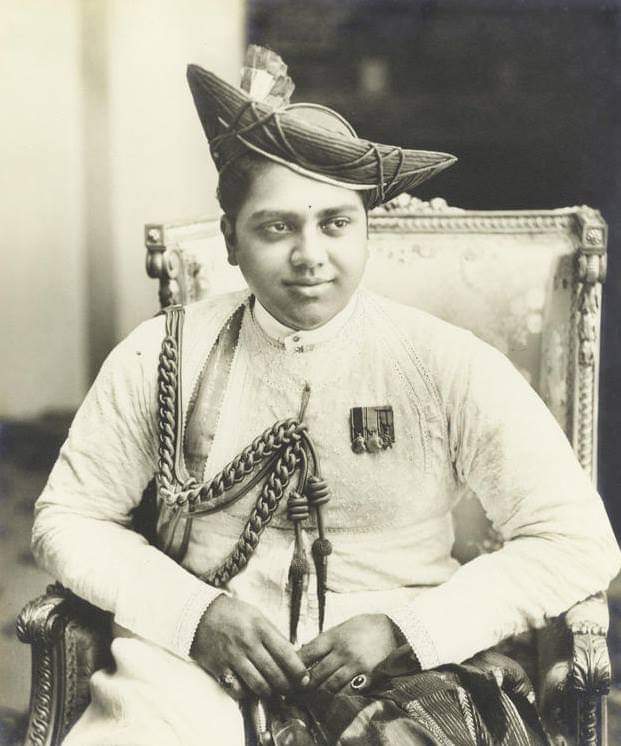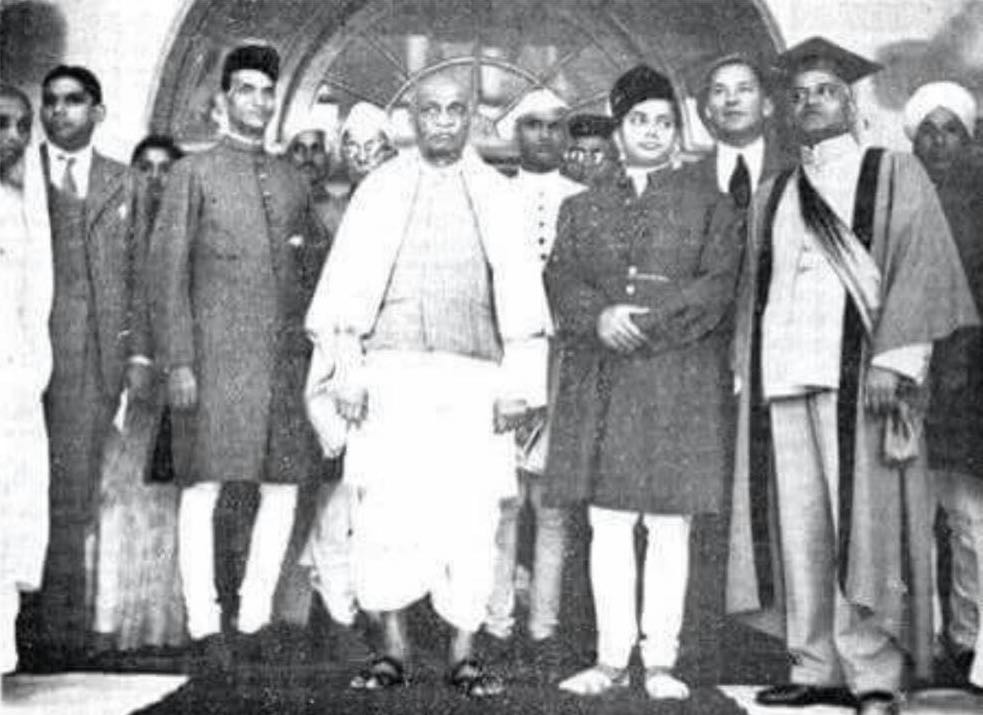Before the promulgation of Indian Constitution and after Indian Independence, there were certain reservations, particularly in regard to any future constitution of India affecting the continuance or sovereignty in and over the State, and the exercise of any powers, authority and rights then enjoyed by them as Rulers.
The Rise
On August 15, 1947 the ruler of Guwalior, Jiwaji Rao Scindia, had signed an Instrument of Accession of his state to the Dominion of India, as then established, and it was accepted by the Governor-General of India on the following day. This Instrument of Accession was similar to those which the other Rulers signed on diverse dates.

On April 22, 1948, The Ruler of Gwalior signed a Covenant with certain Rulers in the former Madhya Bharat area and agreed to form a United State of Madhya Bharat and the United States of Madhya Bharat was formed on June 15, 1948.
The covenant contains 18 articles and 4 schedules. This covenant is a detailed document.
- The Covenanting States agreed to unite and integrate their territories into one State with common Executive. Legislature and Judiciary. Room was kept, for other Rulers to join later if they were so minded.
- The Covenant established a Council of Rulers, with a right to elect a President (to be called the Rajpramukh of the United State) and one Senior Vice-President and two Junior Vice- Presidents. The President and the Senior Vice-President were to hold office during their lifetime and the Junior Vice-Presidents for a term of five years.
- The Rajpramukh was to be aided and advised by a Council of Ministers to be chosen by him and they were to hold office during his pleasure.
- July 1, 1948 was fixed for making over the administration of the Covenanting States to the Rajpramukh including a transfer of all assets and liabilities of the State and of the Scheduled Areas.
- The Rajpramukh had jurisdiction to make laws for the peace and good Government of those areas whether with or without consultation with his Council of Ministers but subject to direction or instructions of the Government of India.
- The Rajpramukh was to execute by 15th June 1948 a fresh Instrument of Accession in place of the separate Instruments already executed by the Covenanting Rulers. By that Instrument he was to accept the making of laws by the Dominion Legislature on all matters mentioned in Lists I and III of the Seventh Schedule to the Government of India Act 1935 except the entries in List I relating to any tax or duty.
- The Rajpramukh and the Vice- Presidents were to enter upon their duties on 11th May 1948. The Rajpramukh and the Vice-President were to be paid Rs. 2,50 000 per year as consolidated allowances and the Junior Vice Presidents were to be paid such allowances as the Rajpramukh was to fix.
- The executive authority of the United State (subject to the provisions of the Covenant and a Constitution to be framed later) was to be exercised by the Rajpramukh and the competent Legislature of the United State was to be given the competence to confer functions upon the subordinate authorities but the Covenant was not to be deemed to transfer to the Rajpramukh any functions conferred by any existing law on any Court, Judge, officer or local or other authority in a Covenanting State.
- The Covenant next provided for the setting up, as soon as possible, of a Constituent Assembly in the manner set out in the Third Schedule to the Covenant to frame a Constitution of a unitary type for the United State within the framework of the Covenant and the Constitution of India and for providing a Government responsible to the Legislature.
- The Rajpramukh was to constitute not later than August 1, 1948 an interim Legislative Assembly for the United State in accordance with the provisions set out in Schedule, IV till the formation of the Constituent Assembly which was then to perform legislative functions as well.
- Further agreements were devised for each of such other States as might join later and the Government of India concurred in the same way with such agreements.
- A fresh Instrument of Accession was executed by the Raj- pramukh on behalf of the United State of Madhya Bharat. Special provisions were made for avoiding legislative conflict, and for any future agreement between the Rajpramukh and the Government of India. Such agreements were to form part of the Instrument of Accession.
- It was however expressly provided by clause 6 as follows:
“6. The terms of this Instrument of Accession shall not be varied by any amendment of the Act or of the Indian Independence Act, 1947, unless such amendment is accepted by the Raj Pramukh of the United State by an Instrument supplementary to this Instrument.”
- The Governor-General of India accepted this Instrument of Accession on September 13, 1948. By then 23 Rulers had joined the United State.
The Fall
- On November 24, 1949, on the passing of the Constitution of India, the Rajpramukh issued a Proclamation after a resolution of the Covenanting Rulers. It affirmed the constitutional relationship’ between the United State and the Dominion of India and provided as follows
“PROCLAMATION FOR MADHYA BHARAT
Gwalior, the 24th November 1949
WHEREAS with the inauguration of the new Constitution for the whole of India now being framed by the Constituent Assembly of India, the Government of India Act, 1935, which now governs the constitutional relationship between this State and the Dominion of India, will stand repealed;
AND WHEREAS, in the best interests of the State of Madhya Bharat, which is closely linked with the rest of India by a community of interests in the economic, political and other fields, it is desirable that the constitutional relationship established between this State and the Dominion of India, should not only be continued as between this State and the contemplated Union of India but further strengthened, and the Constitution of India as drafted by the Constituent Assembly of India, which includes duly appointed representatives of this State, provides a suitable basis for doing so;
I, Jiwajirao Madhavrao Scindia, Raj Pramukh of the Madhya Bharat, now hereby declare and direct that the Constitution of India shortly to be adopted by the Constituent Assembly of India shall be the Constitution for the Madhya Bharat as for the other parts of India and shall be enforced as such in accordance with the tenor of its provisions; That the provisions of the said Constitution shall, as from the date of its commencement’ supersede and abrogate all other constitutional provisions inconsistent therewith which are at present in force in this State.”
Thus, On the coming into force of the Constitution of India, the State of Madhya Bharat became a Part B State. On the passing of the Constitution (Seventh Amendment) Act 1956, Madhya Bharat State ceased to be a Part B State and was integrated with the State of Madhya Pradesh as provided under the States Reorganisation Act, 1956.
Conclusion
This in short is the constitutional history of the States which united to form the United State of Madhya Bharat. It is apparent that the Instrument of Accession and the Covenants operated as a constitution in little for the governance of the United State.
The identity of the United State as a semi-independent unit was preserved and the constitutional framework of this State was indicated. The Covenant was an Act of State on the part of the Rulers. The Government of India merely accorded them recognition and guaranteed its provisions. If treated as an Act of State it ended with the recognition.
Reference
H. H. Maharajdhiraja Madhav Rao vs Union of India; 1971 AIR 530, 1971 SCR (3) 9

[…] Latest The history of British Crown Paramountcy in Indian perspective When Rulers of Madhya Bharat area created a United State after Indian Independence New Methods devised by the supreme court to protect Fundamental Rights The Meaning of […]
[…] through Merger Agreements? The history of British Crown Paramountcy in Indian perspective When Rulers of Madhya Bharat area created a United State after Indian Independence New Methods devised by the supreme court to protect Fundamental Rights The Meaning of […]